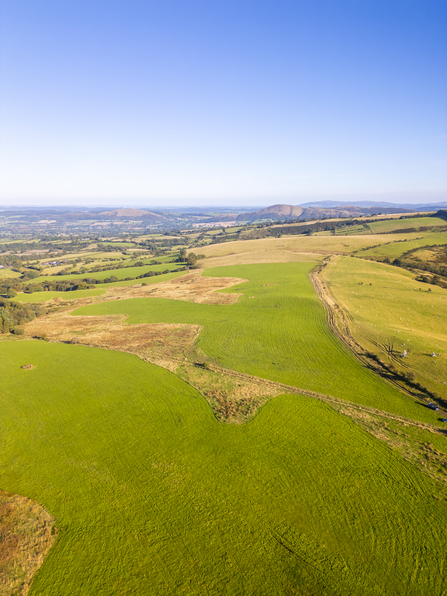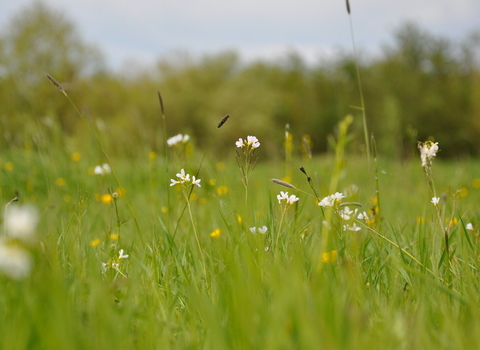Historically, new building development has been a significant cause of nature loss. The new legal requirement in England of Biodiversity Net Gain (BNG) offers the potential to contribute to nature’s recovery.
For over 60 years Shropshire Wildlife Trust has been a champion for wildlife across the county, creating, maintaining and protecting precious sites for nature. We have the knowledge and skills required to assist developers in implementing successful on-site BNG, or to provide off-site BNG.
We can provide high-quality biodiversity units, delivered on land owned and managed by Shropshire Wildlife Trust within the county. Our units are secured for the mandatory 30 years of habitat maintenance and will be maintained well beyond that time as part of our mission to reverse biodiversity loss.
Locally based and locally accountable, Shropshire Wildlife Trust is a charity with nature’s recovery at the heart of everything we do.
Our Habitat Bank
We have high quality BNG units ready for purchase in Shropshire Council and parts of Telford & Wrekin Council administrative areas.
On-site delivery of biodiversity units is always the preferred option, keeping new habitats in close proximity to those being impacted or lost, however, this is not always possible. In these circumstances, Shropshire Wildlife Trust can provide off-site units on our own land, across a range of habitats and distinctiveness categories.
Our habitat bank is strategically located in the county of Shropshire, in the Shropshire Hills character area, and we are engaged in Local Nature Recovery Strategy work to ensure that we align with strategic priorities for nature recovery.
Our approach to BNG enables the creation of habitats before any nature loss is caused and creates a pipeline of biodiversity credits ready for the development sector - delivering more for nature and providing a greater level of security for buyers.
Betchcott Hill | 50 ha

(c) Chris Shein, Wyre Films
Locality
LPA: Shropshire
NCA: Shropshire Hills
Neighbouring LPAs:
- Telford & Wrekin
- Cheshire West and Chester
- Cheshire East
- Newcastle-under-Lyme
- South Staffordshire
- Stafford
- Wyre Forest
- Malvern Hills
- County of Herefordshire
Habitats Available
- Dry acid grassland units (medium distinctiveness)
- Fen units (very high distinctiveness)
- Wet woodland units (high distinctiveness)
- Scrub units (medium distinctiveness)
Consultancy & land management services
Our experts in ecology, land management, and landscape design, provide advice tailored to local conditions. Our Biodiversity Specialists conduct baseline BNG Assessments and advise upon the options available to developers to achieve their BNG target, offering pragmatic and responsive solutions.
Biodiversity Net Gain explained
What is Biodiversity Net Gain?
Biodiversity Net Gain (BNG) is an approach designed to achieve measurable improvements for nature by retaining, creating or enhancing habitats such as grasslands, woodlands, ponds, and hedgerows, in connection with new developments. These biodiversity improvements must be "additional," meaning that new projects should leave nature in a better condition than before and that those gains be maintained for at least thirty years.
Biodiversity is measured using the Defra Biodiversity Metric. A baseline assessment is carried out prior to any changes to the site and then proposed scenarios are tested until the required 10% mandatory net gain has been achieved. Measures required to achieve the required gain will be secured for a period of at least thirty years, for on-site habitats this may be achieved through planning conditions but for off-site provision legal agreements may be required.
All planning applications to which BNG applies receive the standard net gain condition and must submit details relating to BNG provision to the Local Planning Authority for written agreement prior to development commencing. The standard net gain condition is assumed to apply under the legislation and will not necessarily appear on the decision notice.
How will Biodiversity Net Gain affect businesses?
Biodiversity Net Gain regulations came into effect in early 2024 and requires that developments in England deliver a minimum of 10% increase in biodiversity for at least 30 years. Developers in England must deliver a minimum 10% increase in biodiversity for new developments, for at least thirty years.
BNG became mandatory for major developments (over 10 dwellings or employment sites over 1ha) in February 2024, for small sites (1-10 dwellings or employment sites under 1ha) in April 2024 and will come into effect for Nationally Significant Infrastructure Projects (NSIPs) from late 2025.
The requirement can be achieved through the provision of habitats on the site itself, through the development of habitats at other sites or through the purchase of statutory BNG units.
Why is Shropshire Wildlife Trust engaging in BNG?
The Wildlife Trusts have played a key role in shaping BNG for over a decade, starting from early efforts in 2012 to measure and offset biodiversity loss due to development. They have been instrumental in testing and refining the Defra metric and advocating for strong BNG commitments in legislation. At a local level, Wildlife Trusts have influenced the inclusion of BNG policies in local plans and promoted voluntary adoption of BNG. Recently, many Wildlife Trusts have also positioned themselves as providers of high-quality habitats to support BNG initiatives.
If done well, BNG offers a positive step forward in the way we think about development, and is a way to ensure that nature is integrated into planning. It also offers new ways to fund and implement nature’s recovery, raising money from the sales of biodiversity units to reinvest in nature’s recovery and making sure biodiversity is at the heart of the planning process.
Does Biodiversity Net Gain have to be delivered on the site of a new development?
There are three ways in which BNG can be delivered:
- Firstly, through on-site retention, creation, enhancement and restoration of biodiversity (within the red line of the development site).
- Secondly, if some or all of the BNG cannot be delivered on-site then off-site biodiversity gains can be considered. This can either be on land owned by the developer outside of the development site, through a bespoke agreement between the developer and a land owner, or through buying off-site biodiversity units from a habitat bank.
- Finally, if developers cannot achieve on-site or off-site BNG, they must buy statutory biodiversity credits from the government. This is a last resort and evidence must be provided demonstrating that options 1 and 2 are not achievable.
All three methods can be used, either alone or in combination, however they must be considered in order so that development seeks first to avoid impacts, then to mitigate impacts on-site, then (as a last resort) compensate off-site.
All habitats created for BNG must be managed and monitored for thirty years to achieve and maintain the planned uplift. When delivering BNG on-site developers must carefully consider how the BNG gains can be monitored, maintained and protected (e.g. ensuring that these areas will not be needed for future development) over the thirty years. When considering on-site gains it is important to consider how on-site pressures, for example from increased footfall may impact upon habitat condition over time. While the provision of multifunctional green space is always welcome and can contribute towards BNG it is necessary to be realistic about what habitat types and conditions can be achieved and maintained.
What are the legal requirements for offsite Biodiversity Net Gain?
The delivery of off-site Biodiversity Net Gain must be secured with a comprehensive Habitat Maintenance and Monitoring Plan (HMMP) and legal agreement. The legal agreement can either be in the form of a Section 106 (S106) agreement with the Local Planning Authority or through a Conservation Covenant with a Responsible Body. Once the HMMP and legal agreement are in place, the biodiversity units being provided must be registered on national Biodiversity Gain Sites Register. Once the site is registered units can be sold to developers and included within planning permissions.

